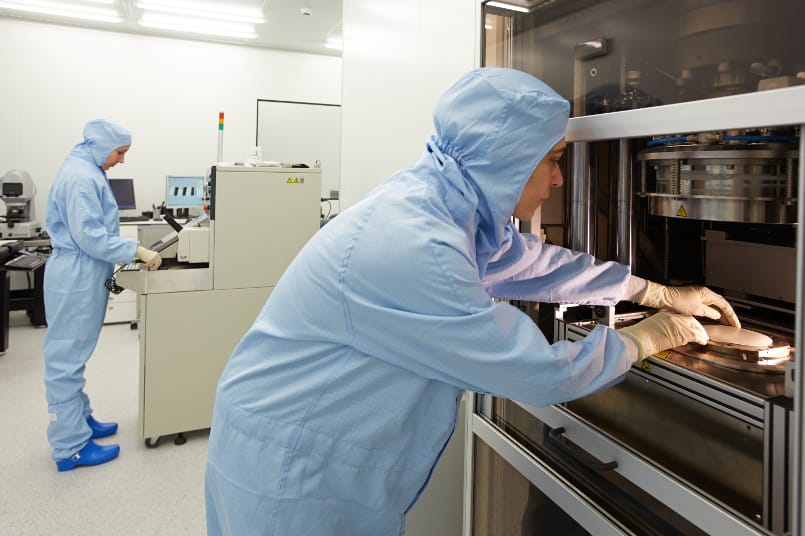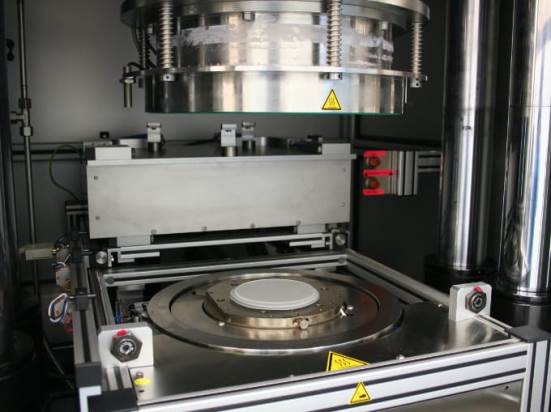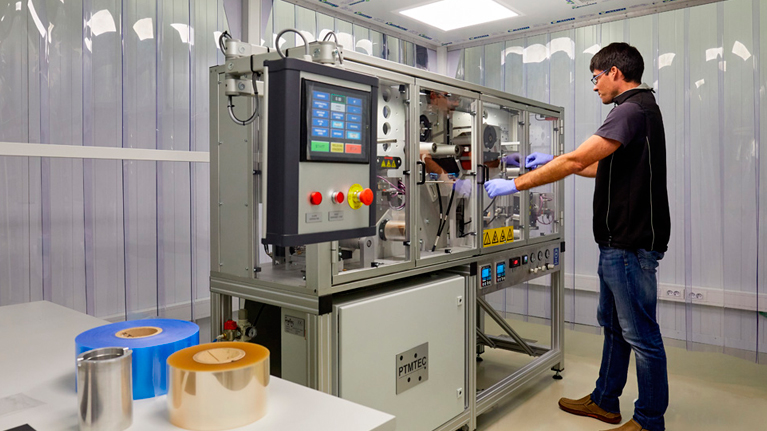Nanoimprint lithography

Nanoimprint lithography is a low cost, high throughput and high resolution manufacturing process for nanoscale patterns, in which the nanoscale structures are formed by the mechanical deformation of a molten polymer and its subsequent cooling or of a monomer or prepolymer and its subsequent curing by temperature or by light.
TEKNIKER works with hot embossing/nanoimprint lithography which allows the structuring by both discontinuous and continuous methods of thermoplastic polymers either in bulk or deposited as a thin layer on a substrate, in this case allowing the replication of the original mould (master) or its inverse, by means of a combination with deposition and etching processes.
These processes make it possible to obtain resolutions in the range of the master employed, being able to achieve defined structures in the range of tens of nanometres.
Micro and nanostructured substrates manufactured using lithography can be used for a wide range of applications (optics and photonics, biotechnology, sensors, obtaining superhydrophobic surfaces, decorative finishes, anti-counterfeiting designs, etc.).




